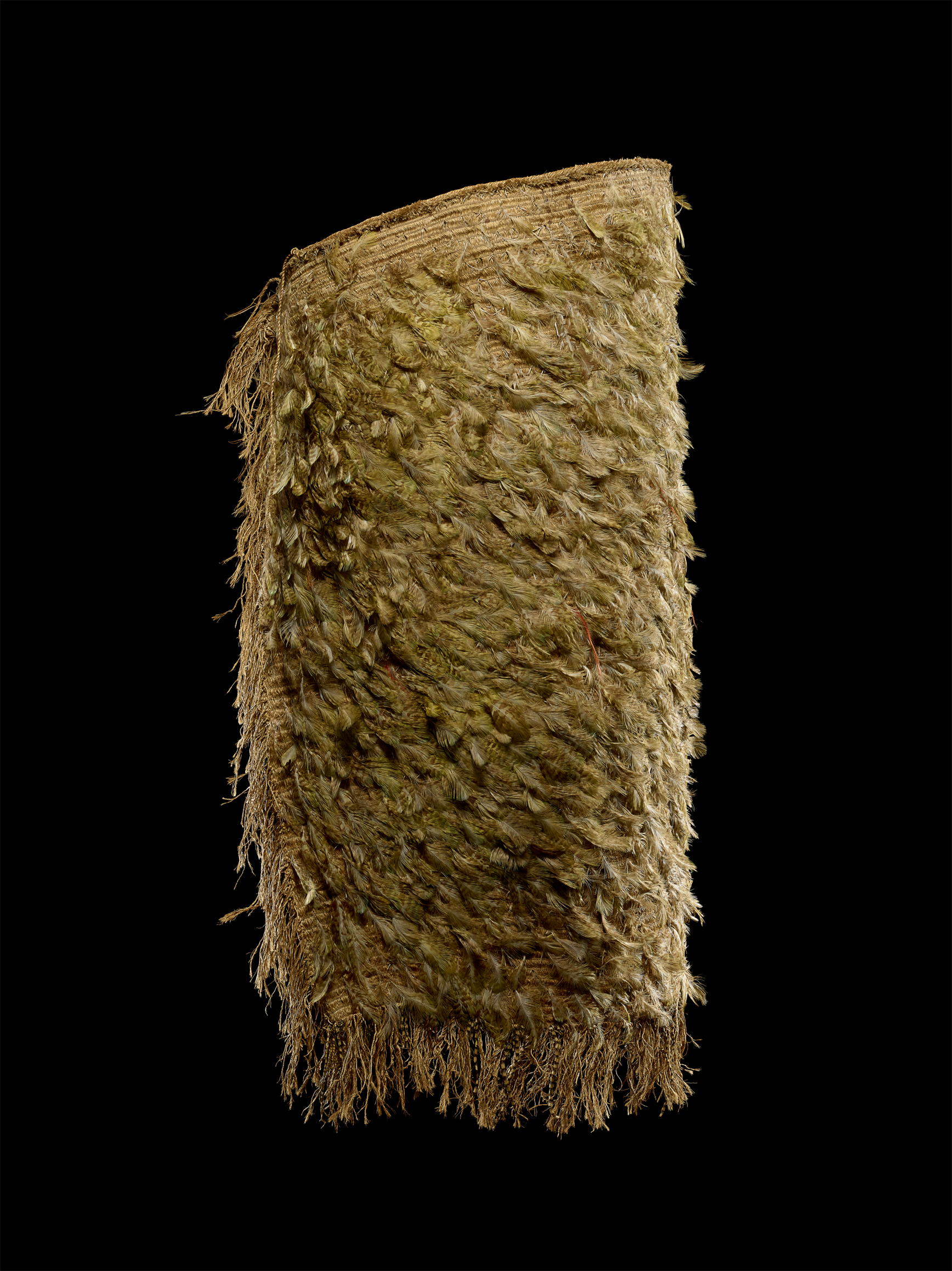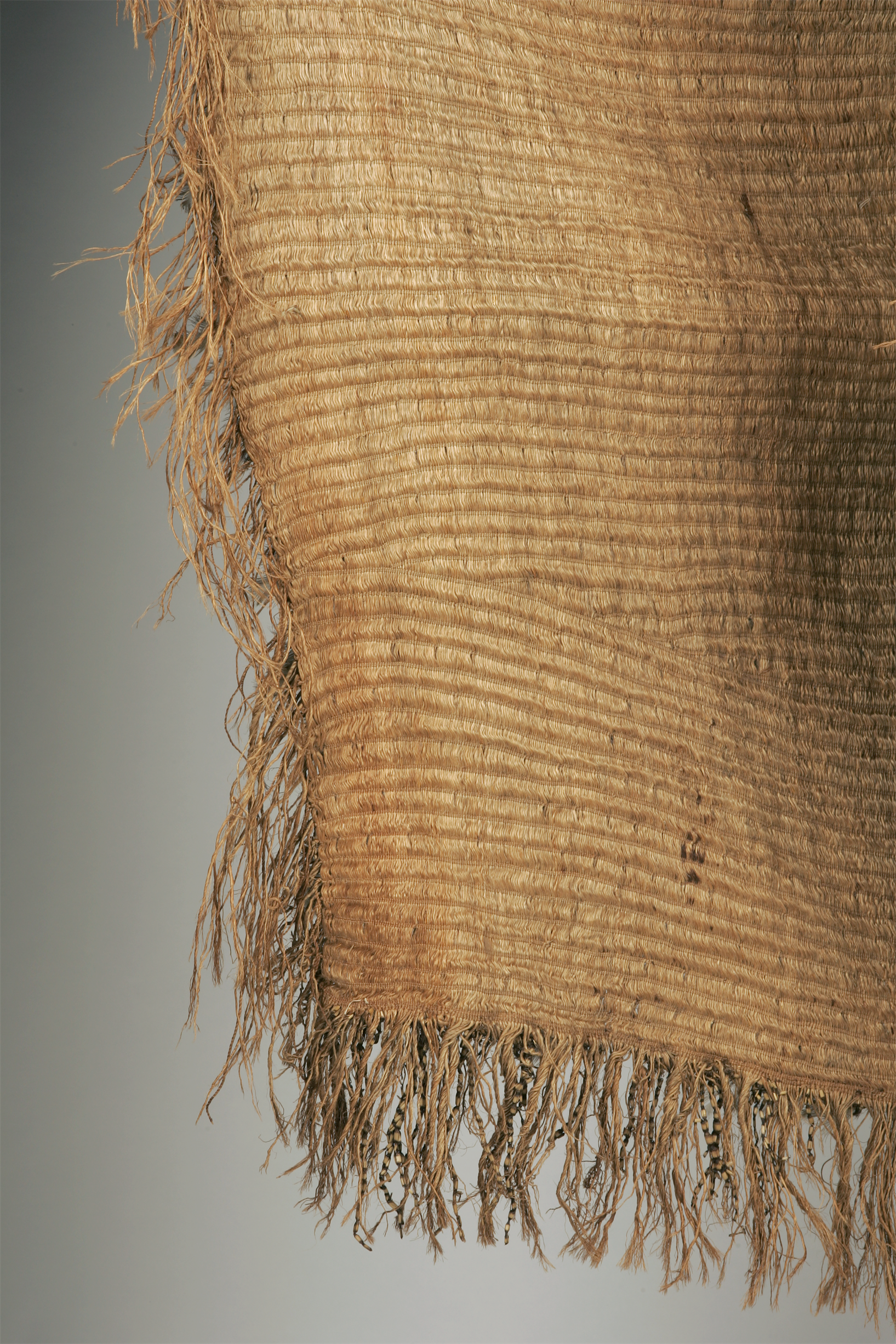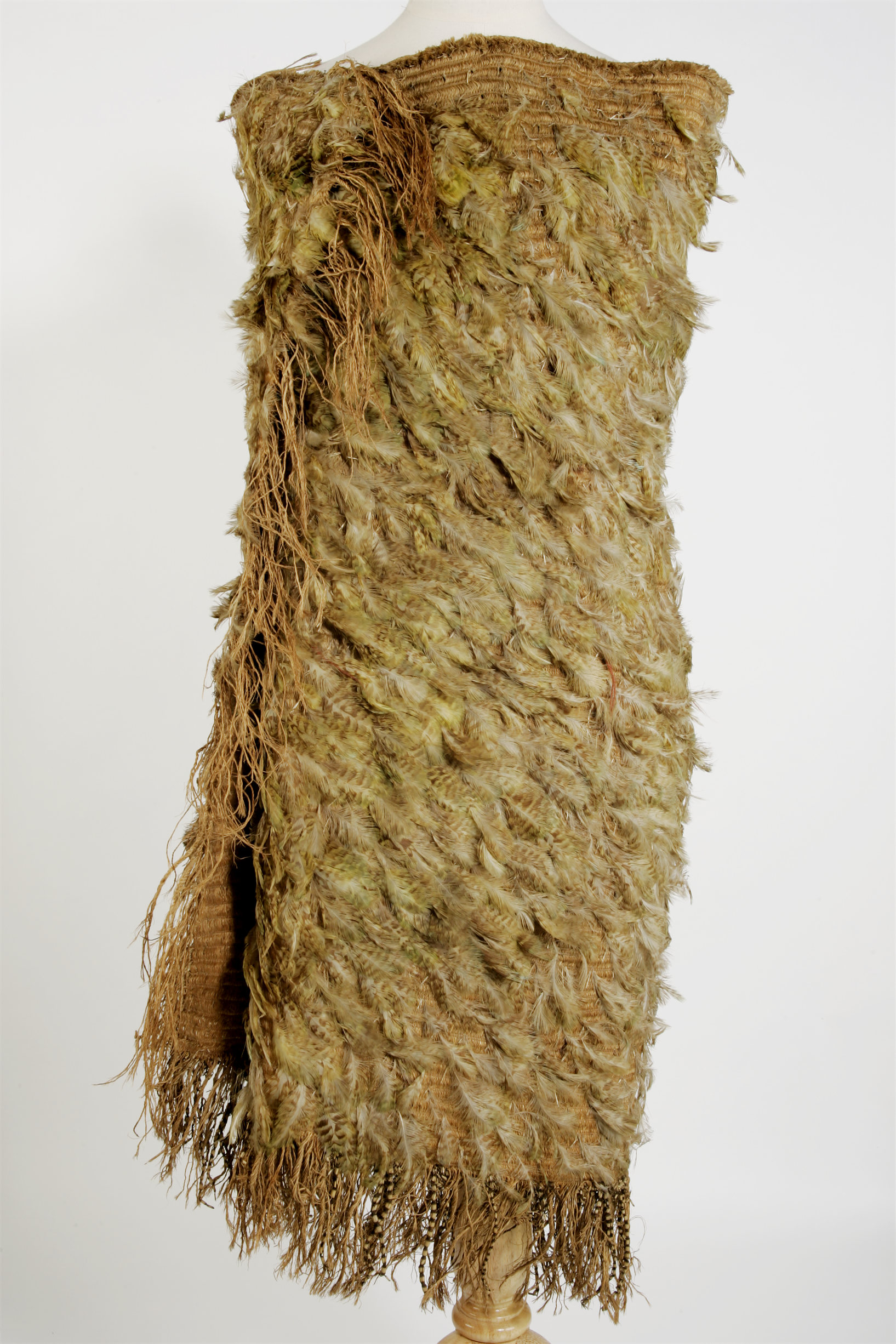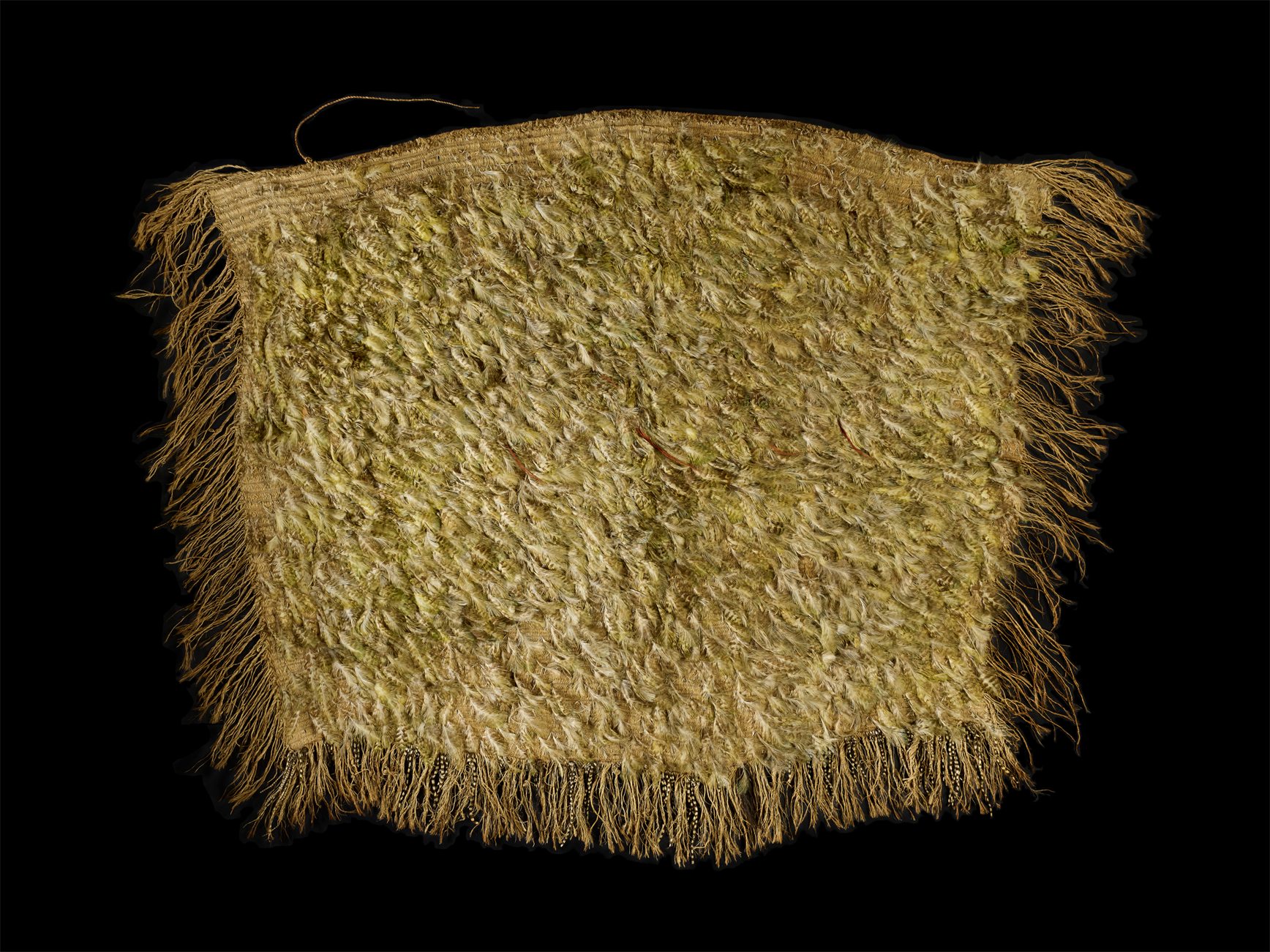Enter a search term above to search our website
Pages
News
Star Objects
The kākāpō cloak in Perth Museum is the only known full kākāpō feather cloak in existence. Kakapo are a flightless parrot who nest on the ground in New Zealand and are a critically endangered species; in June 2020 there were only 210 left.
This is a stunning example of a precious style of chiefly cloak, or kākahu, with unique features including highly prized native bird feathers, processed flax fibre and European wool. Whatu kākahu (cloak weaving) is considered the most highly revered form of Māori weaving. As a sacred, indigenous cultural practice, weaving is a way of passing down knowledge and customs from one generation to the next. It is a way of being and of understanding one’s relationship with the natural world.
To New Zealand Māori, the kākāpō (Strigops habroptilus) is a taonga, a sacred treasure. In the past birds were an important food source for Maori and their plumage was used for chiefly garments.
You can find out more about the kākāpō cloak on our blog, where we explore the creation of a taonga Māori display in the new Perth Museum.



